Does your company have multiple servers taking up valuable real estate in your office? Or have you stepped up to virtualization to save space? Maybe you have moved everything to the cloud?
Read on as I take us through the transition from servers to the cloud and highlight why companies should embrace cloud computing. As you do, ask yourself – Where is my company along the journey to the cloud? And, where do I want to be?
Physical Servers – How It Started
It used to be that every company had one server for every application of their business – email server, file server, sales/CRM, production, etc. – or in some cases, multiple servers per application. Some companies had warehouses full of servers! In addition to the issue of square footage that companies faced with physical servers, they also encountered challenges when it came time for upgrades or migration to new equipment. These involved lengthy periods of downtime to complete – disrupting company productivity. This pushed the industry to evolve into virtualization.
Virtualization – The Steppingstone to Cloud Computing
Virtualization enabled the hardware to be abstracted from the software. Meaning, as the server processors got faster and bigger, each server wouldn’t use all the components (power, memory, disk, CPUs) at one time – so the equipment only ran at about 10-25% capacity. A new layer called a hypervisor was then introduced. When added between the hardware and software, this layer presented the operating system with generic hardware (not the actual hardware). Additional operating systems could then be installed to this same layer so you could run multiple virtual servers on one physical server.
Virtualization offered the benefits of space saving as well as cost savings. While companies may have purchased three servers previously, they could now invest in one larger server for a fraction of the cost.
The problem with virtualization became that the hardware and software on these servers required constant vigilance by people, process, and equipment – adding complexity. The equipment maintenance on backup software and hard drives (or even tapes). The large team of dedicated IT staff to manage and test the backups. The processes for recovery operations. These were all costly necessities to keep the servers up and running. The answer? Cloud Computing.
Remote Access – A Major Influence Toward Cloud Computing
Regardless of whether companies were solely on physical servers or utilizing virtualization, both scenarios required staff to be in the office to access their programs and files. They had to be connected to a laptop or computer, located in the office, running additional software in order to get their work done. If an employee had to be off-site, any updates to their system would most likely have to wait until they got back to the office.
The most common options adopted to manage this were 1.) connecting to a PC (Personal Computer) at the office from a remote PC or 2.) using a laptop to VPN into the office network. Both setups came with their pros and cons – which is why they have hung around for so long, but they are slow and still not optimal solutions.
Then came the pandemic, which accelerated the demand for remote access. More than ever, companies and their employees needed ways to work from home, or anywhere for that matter. This highlighted the fact that – whether physical or virtual – on-premises equipment was not only inefficient but a barrier to company productivity. The answer? Cloud Computing.
Why Embrace Cloud Computing?
The Transition Has Already Started
Most people are familiar with cloud service for email – and most are using it – through Microsoft or Google for example. The service these vendors provide still resides on servers; they are just not located in your office.
Although email was the first software package to move to the cloud, it is by no means the last. Financial, Professional Service Administration (PSA), and Project Management vendors have all embraced cloud versions of their products as well. And, here’s why….
Availability & Reliability
Cloud services provide very little if any downtime. When you think about it, we now rely on almost 100% availability of our email service – from any location. Wouldn’t you like that same freedom and flexibility with all your files, programs, and applications?
Cost Savings
Although there is a monthly cost for cloud service, the amount is significantly less compared to all the other costs I mentioned earlier (people, processes, and equipment) to set up, install, and maintain a physical server or servers. More importantly, a recurring cost is easily factored into your monthly operational expenditure.
Mobility
Cloud service packages also provide mobility for your staff. Not only can they work anywhere but they can work on just about anything. Laptop, home computer, tablet and even a smartphone. Because these solutions reside in large datacenters, which oftentimes are located around the country, the performance of the application is nearly as good as sitting in your office directly connected to a server running the same package.
Security
Security patches are oftentimes pushed out much quicker by the vendor in cloud deployments versus taking time from or waiting for your internal staff or IT team to install the updates. However, security can still be an issue for some software application vendors who are just making the jump to the cloud. It is important to carefully review this before trusting your company and customer data to a cloud vendor. This is just one advantage of having a managed service provider to help you with the process.
Summary
Every company is at some point in their journey to cloud computing. There is no right or wrong; there is just what’s right for you, your employees, and your clients/customers. Some companies may be ready to jump in and take full advantage of the benefits I covered; some may prefer a hybrid if the applications(s) they use are not mature enough to run in the cloud; while others might be more comfortable keeping a server onsite. No matter where you are in the evolution process, most owners need someone who understands the technology, and understands their business, to help them make the best decision for their company.
If you want to find out more about the advantages of cloud solutions for your businesses and working with a managed IT service provider, our team would be happy to help. Learn more at https://sperapartners.com/cloud-service/ or request a Complimentary Consultation at https://sperapartners.com/business-solution-complimentary-consultation/ for Businesses or https://sperapartners.com/Complimentary-Consultation/ for Schools.
Brian Hess, President
Spera Partners
Learn more about our Cloud Services at https://sperapartners.com/cloud-service/














